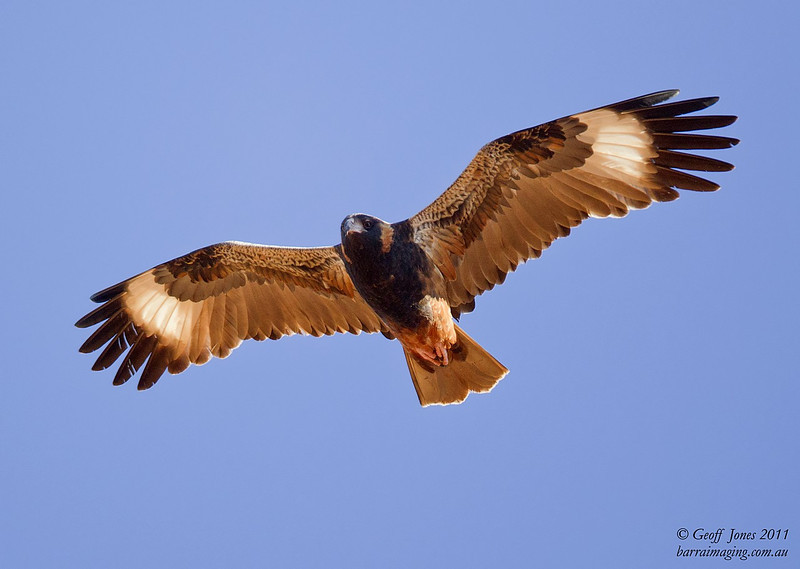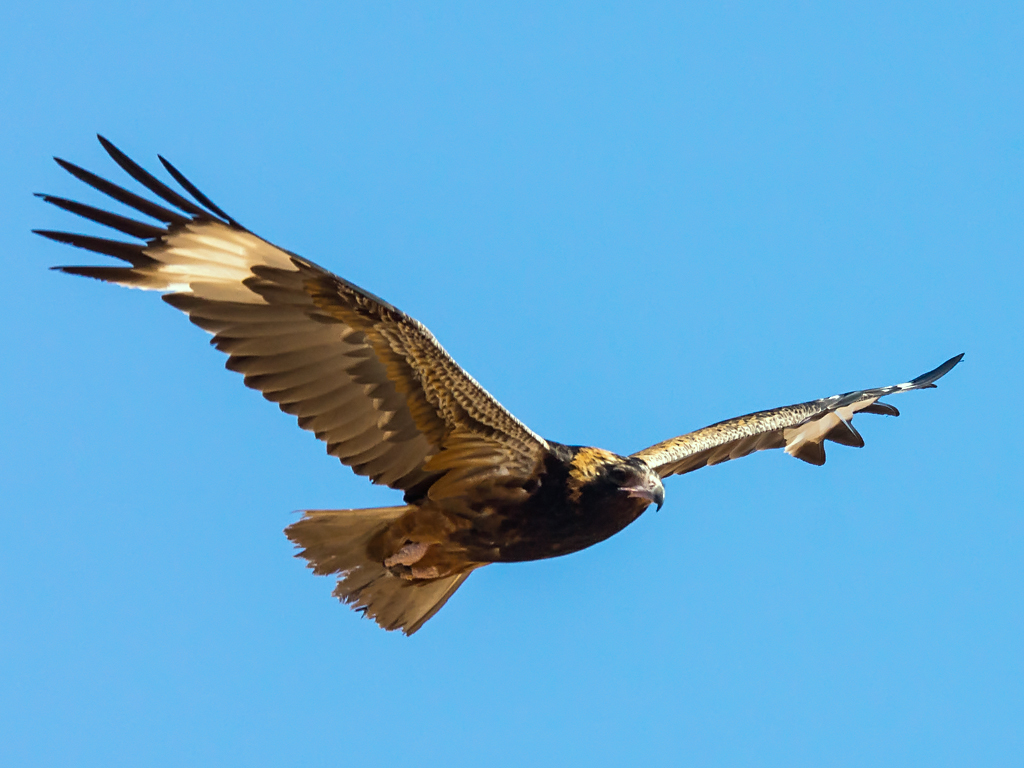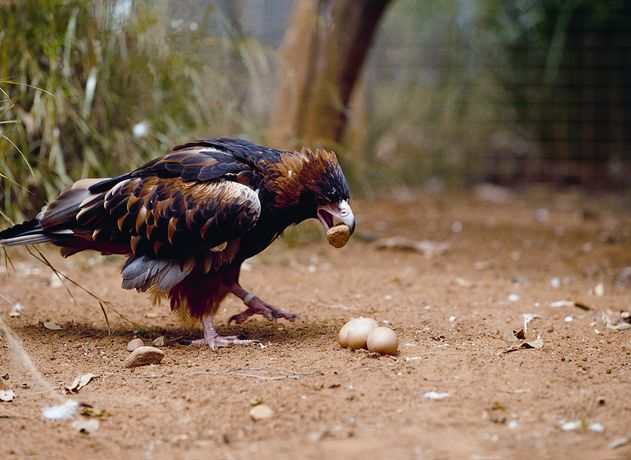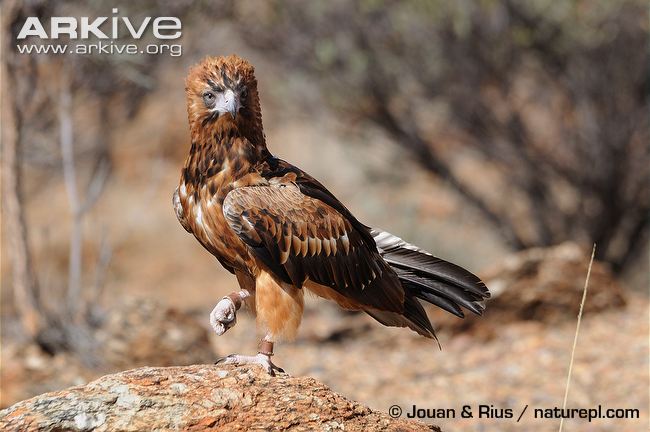
Hamirostra melanosternon
SUBFAMILY
Accipitrinae
TAXONOMY
Buteo melanosternon Gould, 1841, inland New South Wales.
Monotypic.
OTHER COMMON NAMES
English: Black-breasted kite, black-breasted buzzard-kite;
French: Milan а plastron; German: Schwarzbrustmilan; Spanish:
Milano Pechinegro.
PHYSICAL CHARACTERISTICS
19.7–23.6 in (50–60 cm); male c. 1.3 lb (1.3 kg); female c. 3.3
(1.5 kg). Heavy build. Short legs with large white feet. Black
and brown body with white accents.
DISTRIBUTION
Mainly arid central and tropical northern Australia.
HABITAT
Arid deserts, grasslands and plains, especially along wooded
creek lines, and tropical woodlands, grasslands, and savannas.
BEHAVIOR
Usually solitary or in pairs or family groups but gathers in
small numbers (up to nine recorded) at large carcasses. Movement
by part of the population northward in winter for the dry
season, but many birds resident year round. In summer, escapes
tropical coasts (wet season) and hottest deserts.
FEEDING ECOLOGY AND DIET
Spends much time on wing in search of prey, soaring, gliding,
or low quartering; also walks across the ground in search of
prey. Main prey is medium-sized mammals (such as young rabbits),
birds, large lizards, and nestlings of other birds including
raptors. One of the few raptors to use a tool (see also Egyptian
vulture): mainly, picks up a rock in the beak and hurls it at
large eggs (e.g., Emu eggs) to gain access to their contents.
Also breaks egg directly with bill and by throwing egg itself.
Scavenges carrion and occasionally catches snakes and large insects.
Not a powerful predator like the superficially similar
Wedge-tailed eagle (Aquila audax).
REPRODUCTIVE BIOLOGY
Usually nests as solitary pair but one polyandrous trio
recorded. Builds a large platform of sticks lined with leaves in a
living or dead tree in the open. Typically, lays a clutch of two
eggs in August–October. Incubation about 36 days; chicks
fledge after about seven or eight weeks.
CONSERVATION STATUS
Not threatened. Widely but thinly distributed across range and
generally uncommon. Declined in south-east of range due to
HABITAT
degradation and loss of prey species.
SIGNIFICANCE TO HUMANS
Susceptible to poisoning when scavenging on baited carcasses,
but harmless to stock. Traditionally hunted by some aboriginal
tribes and feathers used in hairbelts and other decorative products,
but custom largely lapsed.
Other popular Animals
Photo Gallery of - Black-breasted buzzard




 Animalia Life
Animalia Life